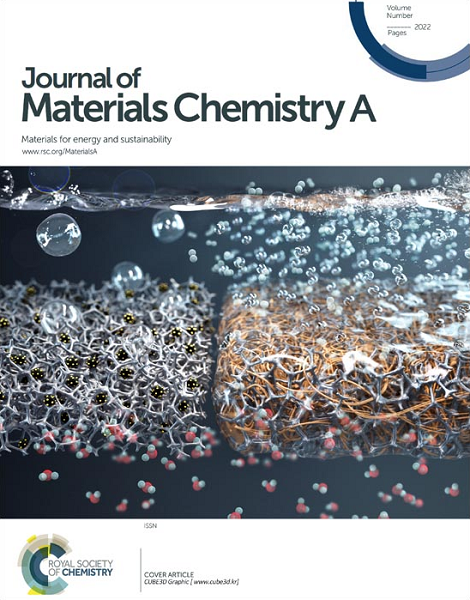原子层状NiO/磷掺杂MnO2 P-N结:通往高性能超级电池器件的途径
IF 10.7
2区 材料科学
Q1 CHEMISTRY, PHYSICAL
引用次数: 0
摘要
本文介绍了一种利用p-n结电极的固有电场来增强电化学能量存储的创新方法,该方法可以改善界面上的电荷传输。在本研究中,通过水热、磷酸化和原子层沉积工艺,在n型掺磷MnO2纳米片和p型NiO原子层之间形成了p-n结。磷离子的添加通过引入许多活性位点来增强导电性,这对能量储存至关重要。p型NiO和n型掺磷MnO2异质界面处的内置电场保证了高效率的电荷转移。磷掺杂MnO2上的超薄NiO原子层稳定了表面,有利于延长电化学反应时间,并提供比原始的磷掺杂和未掺杂MnO2电极更高的比电容。此外,在p掺杂MnO2 // rGO上制备了5nm NiO ALD的全固态超级电池器件,该器件的比电容为208 F/g,功率密度为750 W/kg时能量密度为71.98 Wh/kg。这种卓越的电化学性能和稳定性证实了所构建的p-n结电极可以为下一代超级电容器生产理想的材料。本文章由计算机程序翻译,如有差异,请以英文原文为准。
Atomic Layered NiO/Phosphorus-Doped MnO2 P-N Junctions: A Pathway to High-Performance Supercapattery Devices
This article introduces an innovative approach to enhancing electrochemical energy storage by leveraging the inherent electric field of a p–n junction electrode, which improves charge transport at the interface. In this study, a p–n junction was formed between n-type phosphorus-doped MnO2 nanosheets and a p-type NiO atomic layer, prepared using hydrothermal, phosphorylation, and atomic layer deposition processes. The addition of phosphorus ions enhanced electrical conductivity by introducing numerous active sites, which are crucial for energy storage. High-efficiency charge transfer was ensured by the built-in electric field at the heterointerface of the p-type NiO and n-type phosphorus-doped MnO2. The ultrathin NiO atomic layer on the phosphorus-doped MnO2 stabilized the surface, facilitating prolonged electrochemical reactions and delivering a higher specific capacitance than pristine phosphorus-doped and undoped MnO2 electrodes. Furthermore, an all-solid-state supercapattery device was developed, consisting of 5 nm NiO ALD on P-doped MnO2 // rGO, which delivered a specific capacitance of 208 F/g and exhibited a high energy density of 71.98 Wh/kg at a power density of 750 W/kg. This remarkable electrochemical performance and stability confirms that the constructed p–n junction electrode could produce desirable materials for next-generation supercapacitors.
求助全文
通过发布文献求助,成功后即可免费获取论文全文。
去求助
来源期刊

Journal of Materials Chemistry A
CHEMISTRY, PHYSICAL-ENERGY & FUELS
CiteScore
19.50
自引率
5.00%
发文量
1892
审稿时长
1.5 months
期刊介绍:
The Journal of Materials Chemistry A, B & C covers a wide range of high-quality studies in the field of materials chemistry, with each section focusing on specific applications of the materials studied. Journal of Materials Chemistry A emphasizes applications in energy and sustainability, including topics such as artificial photosynthesis, batteries, and fuel cells. Journal of Materials Chemistry B focuses on applications in biology and medicine, while Journal of Materials Chemistry C covers applications in optical, magnetic, and electronic devices. Example topic areas within the scope of Journal of Materials Chemistry A include catalysis, green/sustainable materials, sensors, and water treatment, among others.
 求助内容:
求助内容: 应助结果提醒方式:
应助结果提醒方式:


